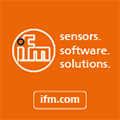
Posted to News on 5th Apr 2007, 19:15
Temperature measurement on low-emissivity targets
Geoff Chapman of Calex Electronics explains how infrared sensor selection can make all the difference when trying to measure the temperature of low-emissivity targets inside ovens.
Measuring a target with a low emissivity value can be difficult at the best of times but, when the target is inside a hot oven and the sensor is mounted outside the oven, it can be virtually impossible without the right equipment. The emissivity compensation in standard infrared temperature sensors is not appropriate for such situations, as it assumes that the target being measured is in the same ambient environment as the sensor itself - which can lead to large errors in the measured temperature. The Calex Electronics VL700, however, can cope thanks to its cutting-edge Reflected Energy Compensation feature.
The energy that an infrared temperature sensor measures is composed of three elements: the energy radiated by the target, the energy reflected by the target, and energy transmitted through the target. Most solid targets are opaque at infrared wavelengths and, as such, the third of these elements can be eliminated. This leaves the combined radiated and reflected energy from the target as the source of the infrared sensors measurements.
Most infrared sensors measure the ambient temperature where they are positioned, and then assume that any reflections from the target are from a source at the same temperature. They compare their ambient temperature reading with the infrared energy received from the target, and perform a calculation based on their emissivity setting to give the 'real' temperature of the target.
If the ambient temperature where the sensor is positioned is different to that where the target is located, then the calculated 'real' temperature of the target will be wildly inaccurate, as the reflections coming from the target due to its surroundings will not be properly taken into account.
The VL700 does not suffer from this problem, as its Reflected Energy Compensation feature allows it accurately to compensate for reflections from the target. The background temperature where the target is situated can be input into the VL700 in the same way as the emissivity of the target, and it then uses this value when performing the emissivity correction. In such situations, this allows the VL700 to provide much more accurate measurements of reflective targets than standard infrared temperature sensors.
Want the latest machine building news straight to your inbox? Become a MachineBuilding member for free today >>

















